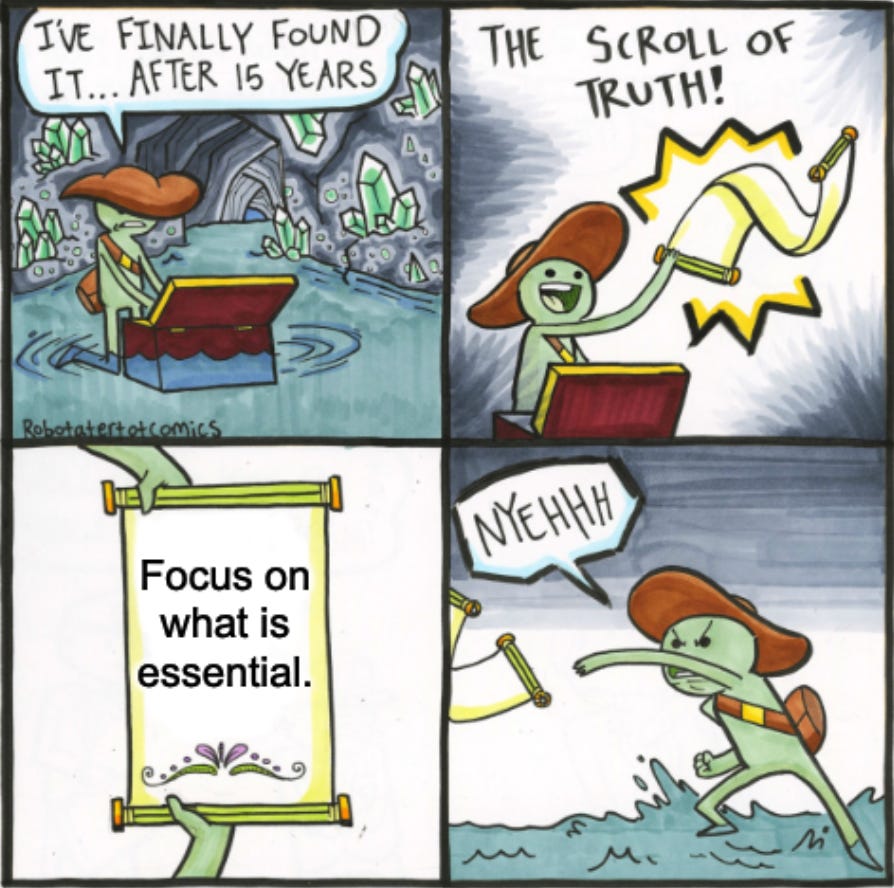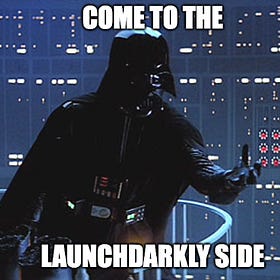Less Is More: How to Cut Features Without Losing Impact
A Practical Guide to Reducing Scope and Maximizing Impact in Product Development.
Let's get straight to the point: cutting features isn't a sign of weakness or compromise.
It's a sign of seniority and clarity.
Too many engineers and product teams think that more features equals more value. That's a costly mistake. The best product leaders and engineers know that strategic scope reduction is a deliberate, mature choice driven by a deep understanding of business objectives and user needs.
Great products aren't built by stacking features but by eliminating distractions and zeroing in on what truly matters. Scope reduction done right delivers impact faster without diluting the value.
This article will show you how to build this skill and confidently cut scope, delivering better outcomes for your users and business.
Scope Reduction as a Strength
There's a strange notion in engineering:
❌ Reducing scope signals failure or an inability to deliver.
Let's dismantle that immediately.
Strategically cutting features doesn't indicate weakness but demonstrates business awareness and clear decision-making. When you're willing to trim features that aren't critical, you're showing that you prioritize real impact over superficial complexity.
Leaders and stakeholders respect engineers who can confidently say:
✅ This isn't essential. Let's focus on what is.
In fact, scope reduction is often the best step to creating leaner, more focused, and more effective products.
Identify Your Core User Journey
Before cutting anything, clearly define what value you're actually trying to deliver and for whom.
Too often, product teams lose sight of the core user journey, stuffing their products with secondary features that distract from their central purpose—the features users actually pay for and which they expect to work flawlessly.
The first step in smart scope reduction is mapping out a minimal user journey focused purely on outcomes.
Forget about fluff and superficial what-ifs. Think instead about the critical steps users must take to reach their primary goal. Every interaction or feature should clearly connect to delivering that value.
Actionable Tip
Create a simple flowchart or diagram visualizing your product’s core user journey. Any step or feature outside this essential path is a candidate for removal.
Consistently return to the question:
💡 Does this step directly help the user achieve their core goal?
Aim to keep the journey lean, intuitive, and impactful.
Feature Split
Once you've identified your core user journey, the next challenge is handling complexity. Large features are risky. They slow you down, increase uncertainty, and often lead to feature creep during implementation, diluting the core value you aim to deliver.
Such monolithic features need to be split into smaller, manageable pieces that still deliver clear, standalone value. The goal isn't to deliver everything at once but to provide meaningful increments that still feel complete.
💡 What's the smallest increment that still solves a meaningful problem for our user?
Everything beyond this minimum increment is a candidate for a feature split.
Impact vs. Effort Matrix
After splitting your features, you need a clear way to prioritize these smaller chunks. The Impact vs. Effort matrix is the perfect tool: simple and fast.
Plot each feature based on two straightforward dimensions:
X-axis: Required effort
Consider engineering and product complexity, dependencies, rollout strategy, and risks.
Y-axis: Anticipated impact
How much user value, potential revenue, or competitive advantage it brings.
Practical Tip
Don’t get too overexcited when estimating.
Engineers are often great at being overly optimistic when it comes to effort estimates (estimating too low).
Product managers are often great at being overly optimistic when it comes to impact estimates (estimating too high).
Summary
Scope reduction is about clarity and discipline.
Successful product teams know that strategically cutting unnecessary features by
clearly defining the core user journey
breaking complex deliverables into smaller independent chunks
prioritizing them objectively
demonstrates maturity and streamlines product delivery.
I’d like to hear about your experience. What methods do you use for scope reduction?
📖 Read Next
Discover more from the Product Engineering track:
How to Ship Faster, Safer, and With Less Drama
Shipping software shouldn’t be a gamble. But for many teams, every release feels like one.
If you’re looking for a space where you can learn more about software engineering, leadership, and the creator economy, with Dariusz Sadowski, Michał Poczwardowski, and Yordan Ivanov 📈, we’ve created the Engineering & Leadership discord community:





